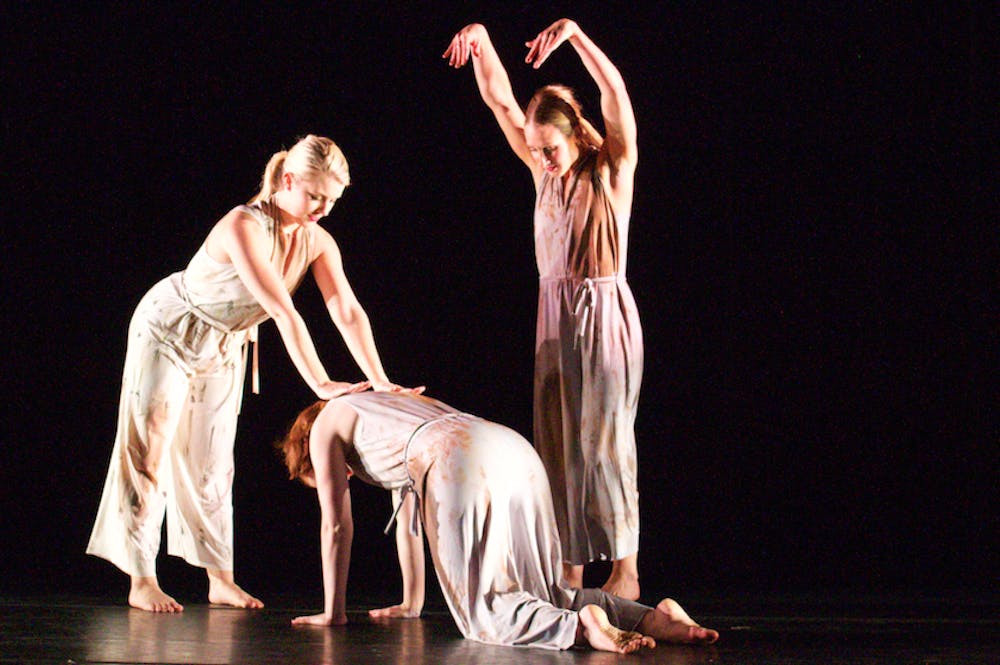Dancing in the Black Box will highlight nine pieces of student, faculty and guest choreography starting Thursday. The performance is primarily composed of contemporary and contemporary ballet works.
The diversity of the choreographers plays into each piece. They range from solos, duets and trios to larger groups.
Students showing their choreography have been working on their pieces since last September while taking a choreography class. After last fall’s semester, the students took some time to step away and reevaluate how to best complete their pieces.
Assistant professor of dance Jen Guy Metcalf said that this period of time was beneficial because students were able to gain alternative perspectives on their work.
She noted that students often attend summer dance programs and apply what they have learned there to their choreography.
“It gives them the opportunity to apply those ideas to their creative process,” she said. “It’s just helped them to develop as creative artists.”
The students frequently adapt their work so it is more professional after these summer programs.
Senior dance major Caroline Bondurant will showcase her choreography. She drew inspiration from a quote from the book “The Fault in Our Stars,” by John Green: “My thoughts are stars I cannot fathom into constellations.”
“I really liked the idea of turning your thoughts into constellations,” Bondurant said. “So they dance in the shape of constellations.”
Bondurant applied qualities she learned from her “Contact Improvisation” class to the piece, like partnering and weight-sharing through various movements.
“The hardest part was refining movement phrases,” she said. “And creating organic and natural transitions into and out of contact improv-based partnering.”
Senior dance major Sophie McNeill based her choreography on an interaction with her father, who asked where dinner was one night upon realizing her mother wasn’t home. McNeill looked to the typical portrayals of 1950s housewife for inspiration.
“My piece explores the initial innocence of a housewife, the further mundaneness that can occur and, finally, the breakout,” she said.
McNeill focused on how to develop this story into a more abstract form of art. Even so, she wanted the message to be applicable and understandable to the audience.
As a result, she chose more theatrical choreography so the message would be clearer.
“It’s all about the balancing act between making your choreography easily understandable but still leaving it open for interpretation,” McNeill said. “My big push last year as a choreographer was to make art accessible and more easy to understand because I think people often leave confused after they see a dance performance.”
Metcalf said she has been impressed with the quality of choreography produced by the students, adding their works were professional.
She added that she hopes the audience recognizes how developed and mature the choreography is.
She is excited her students will have the opportunity to perform their work in a professional environment and said she believes the audience will be able to perceive the qualified nature of the performance.
“They could probably notice that these students could have a professional career one day,” Metcalf said. “I hope they take something meaningful away, and it makes them think when they leave the theater.”


